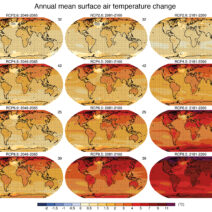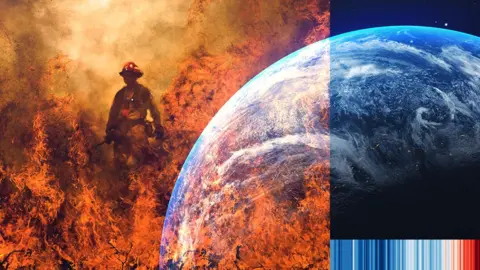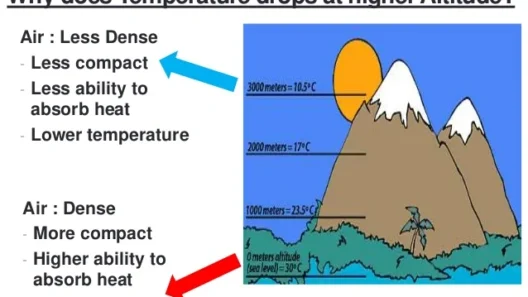The tapestry of Earth’s climate is intricate, woven over millennia with threads of natural variability and human influence. However, recent developments have unraveled a disconcerting reality: climate change, a phenomenon once attributed solely to the world’s natural rhythms, is now unequivocally linked to human activity. Indeed, the evidence mounts like torrents swelling a once tranquil brook, compelling us to confront the formidable truths of our impact on the planet.
To understand how we know climate change is induced by humans, one must first delve into the fundamental mechanisms governing our atmosphere. The greenhouse effect, a natural process that warms the Earth, has been exacerbated by the augmentation of greenhouse gases resulting from industrial activities, deforestation, and fossil fuel combustion. Just as a blanket traps heat to keep you warm on a chilly night, these gases form a thick veil around the planet, retaining warmth and altering weather patterns with alarming frequency.
Carbon dioxide (CO2) levels have surged since the dawn of the Industrial Revolution. In 1750, atmospheric CO2 was approximately 280 parts per million (ppm). Fast forward to the present, and that number exceeds 410 ppm—a staggering increase of over 36% within a mere 250 years. Such dramatic escalation can be likened to a relentless river eroding the foundations of our climate’s once steady banks.
Evidence supporting the anthropogenic origins of this increase is robust. Isotopic analysis of carbon reveals a significant differentiation between fossil fuel-derived carbon and that found in natural sources such as vegetation and oceans. Fossil fuels have a distinctly lower ratio of carbon-13 to carbon-12 isotopes, a lexicon of numbers that, when studied, speak volumes about their origin. As humanity burrows deeper into the Earth’s crust for energy, the isotopic signature of this carbon permeates our atmosphere, affirming our role as climate architects.
Moreover, the fingerprints of humanity’s actions are imprinted in the warming oceans—vast reservoirs of heat that play a crucial role in regulating global climate. As greenhouse gases accumulate, they bestow upon the oceans the burden of absorbing more than 90% of the excess heat. This conundrum not only leads to elevated sea surface temperatures but also fuels the ferocity of hurricanes and cyclones, diminishing the stability of marine ecosystems and coastal communities alike.
Consider the ice sheets of Greenland and Antarctica, majestic monoliths that have stood sentinel for eons. Yet, satellite observations depict a disquieting trend: glaciers are retreating, and ice loss is accelerating. In Antarctica alone, ice loss doubled between 1997 and 2017, revealing a profound connection to rising global temperatures—temperatures significantly influenced by human actions. The visceral imagery of soaring sea levels swallowing coastal cities encapsulates a reality fraught with peril, a direct descendant of our industrial legacy.
The advocacy for concluding that climate change is human-induced does not rest solely on atmospheric chemistry and physical observations but is also fortified by climate models—sophisticated tools that simulate both natural variables and anthropogenic influences. When projections from these models are scrutinized, the simulations that incorporate greenhouse gases provide an alarming forecast that starkly contrasts with scenarios devoid of human impact. The juxtaposition of these models evokes a clarion call, illuminating the trajectory we are on, laden with the weight of our decisions.
Further validating the argument is the physiological response of ecosystems to climatic shifts. Species migration patterns are shifting, breeding seasons are advancing, and ecosystems previously teetering on the edge of equilibrium now find themselves grappling with unrelenting change. Such dynamics are akin to a delicate ballet upon a stage increasingly beset by turbulence—every dancer feels the tremors, every organism must adapt or face obliteration. The intricate relationships intertwined among flora and fauna are unraveling, each thread fraying under the relentless heat of human-induced climate change.
Additionally, the amplification of extreme weather events, from droughts to floods, has emerged as a clarion testament to the hidden costs of progress. Statistical analyses reveal a discernible increase in the frequency and intensity of such weather phenomena, unmistakable signatures of a warmer planet driven by human excess. The once predictable rhythms of nature have morphed into unpredictable crescendos, with repercussions that extend far beyond immediate locales to encapsulate a planetary dilemma. The tale of climate change is not solely one of rising temperatures but also of human hubris laid bare.
The discourse surrounding climate change transcends mere scientific inquiry; it echoes into the very fabric of ethical responsibility. As custodians of this planet, we must grapple with the implications of our choices. The principle of intergenerational equity springs to life, challenging us to consider not only our immediate convenience but the legacy we bequeath to future generations. The footprints we leave in our wake carve paths through the climate landscape, grounding our ethical obligation to rectify past mistakes, mitigate current impacts, and avert future catastrophes.
In conclusion, the evidence for human-induced climate change is irrefutable, a compendium of data and observations that beckons action. We stand at a critical juncture, called to confront our reality with collective resolve. Just as a fragile ecosystem thrives on interconnectedness, so too must we harness our unity to forge a sustainable future. The challenges are daunting, yet within them lies an opportunity for transformation—one that demands a transition from passive acknowledgment to proactive stewardship. Only through concerted action can we hope to restore balance to the fragile climatic tapestry that sustains life on this planet. The time to act is not tomorrow; it is now.




